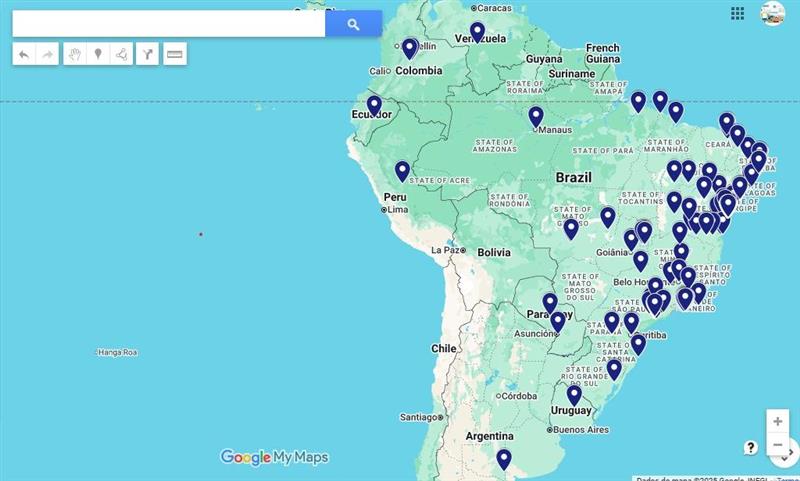Agricultural production
Estimate down 0.8% with a forecast of 298.3 million tonnes in 2024
April 11, 2024 09h00 AM | Last Updated: April 15, 2024 05h07 PM

The national crop of cereals, legumes and oilseeds should be 298.3 million tonnes in 2024, according to the March estimate from the Systematic Survey of Agricultural Production (LSPA), released today (11) by the IBGE. This represents a production 5.4% lower than that obtained last year (315.4 million tonnes). Compared to the February estimate, there was a drop of 0.8% or 2.3 million tonnes.
The production of soybean, the country's main commodity, fell 1.6% compared to forecasts in February and is expected to reach 146.9 million tonnes. This quantity is equivalent to a reduction of 3.3% compared to the total produced last year. The negative result is explained especially by the presence of weather phenomena such as El Niño.
“In November and December, there were many weather problems: it rained a lot in the South, while in the Central-West there was lack of rain. Then there was a drop in production, mainly in soybeans and the corn 1st crop. As corn prices have fallen, producers are reducing the planting area, which affected the second crop”, explains LSPA manager, Carlos Barradas.
Corn production, which is expected to total 116.1 million tonnes in 2024, fell 0.6% compared to the previous month's estimate and 11.4% compared to that produced in 2023, when considering both crops.
“On the other hand, with the fall in corn prices, some producers put aside this production to plant cotton, which had a growth of 2.3% compared to last month’s estimate and 8.0% compared to 2023 It’s a production record”, highlights Mr. Barradas. The forecast is that seed cotton will reach a production of 8.4 million tonnes this year.
The rice harvest is expected to grow 1.7% compared to last year's production, reaching 10.5 million tonnes. Together, soybeans, corn and rice account for 91.6% of grain production in the country.
In turn, bean production is also expected to grow, reaching 3.3 million tonnes, considering the three crops. This quantity represents a growth of 2.8% compared to what was estimated in the previous month and 11.1% compared to what was produced last year. For Barradas, the legume crop will be enough to supply the country's internal consumption this year.
“With this, there should be no need for imports. It is possible to observe that bean prices are already falling”, says the researcher.
Other highlights in relation to the February estimate were barley (increase of 12.3% or 50.8 thousand tonnes), oats (4.6% or 53.3 thousand tonnes), the first potato crop (3.8 % or 63.5 thousand tonnes), wheat (3.3% or 318.6 thousand tonnes) and canephora coffee (3.2% or 34.9 thousand tonnes).
“We can observe a good coffee crop. In addition to being in a positive biannual period, the weather helped this production a lot, as it has been raining in the main producing regions, such as Minas Gerais, São Paulo and Espírito Santo”, details Mr. Barradas. The production of the two species of coffee (Arabica and Canephora) should total 3.6 million tonnes, an increase of 1.4% compared to what was estimated in February and 5.6% compared to that produced in 2023.
On the other hand, among the declines, grapes stand out (-9.9% or -159.0 thousand tonnes). The reduction in the estimate is related to weather problems in the South, the main producing region in the country.
The area to be harvested fell 0.2% (or 125.5 thousand hectares) compared to 2023, totaling 77.7 million hectares. There was a decrease in the area of corn (-5.8%), wheat (-6.6%) and sorghum (-4.4%). Compared to the February estimate, the drop was 0.4% in the country, which represents 286.0 thousand hectares.
Mato Grosso continues to lead national grain production
Among the Federation Units, Mato Grosso continues to be the largest national grain producer, accounting for 28.2% of the total produced in the country. The state is followed by Paraná (13.7%), Rio Grande do Sul (13.3%), Goiás (10.2%), Mato Grosso do Sul (8.4%) and Minas Gerais (5.7% ). Together, these six states represent 79.5% of Brazilian grain production.
Regionally, the Central-West (47.0%) leads this ranking, while the other regions have the following shares: South (29.2%), Southeast (9.4%), Northeast (8.7%) and North (5.7%).
In relation to the production estimate, the Federation Units that had the greatest absolute gain were Mato Grosso (240.6 thousand tonnes), Goiás (156.4 thousand tonnes), Paraná (141.3 thousand tonnes), Maranhão (55.9 thousand tonnes), Ceará (19.9 thousand tonnes), Bahia (19.5 thousand tonnes), Amazonas (8.9 thousand tonnes) and Rio de Janeiro (3.1 thousand tonnes). The drops in estimates compared to February were recorded in Mato Grosso do Sul (- 1.8 million tonnes), in Santa Catarina (-518.2 thousand tonnes), in Rio Grande do Sul (-451.5 thousand tonnes ), in the Federal District (-80.7 thousand tonnes), in Rondônia (-80.2 thousand tonnes), in Piauí (-71.6 thousand tonnes), in Minas Gerais (-16.2 thousand tonnes), in Espírito Santo (-1.1 thousand tonnes) and Amapá (-28 tonnes).
About the LSPA
Implemented in November 1972 with the purpose of meeting users' demands for monthly cyclical statistical information, the LSPA provides estimates of planted area, harvested area, amount produced and average yield of selected products based on criteria of economic and social importance for the country. It allows not only the monitoring of each crop investigated, from the planting intention phase to the end of the harvest, in the reference calendar year, but also the forecast for the following year's crop, carried out in the months of October, November and December. LSPA data can be accessed in Sidra database. The next release of the LSPA will be on May 14th.

















